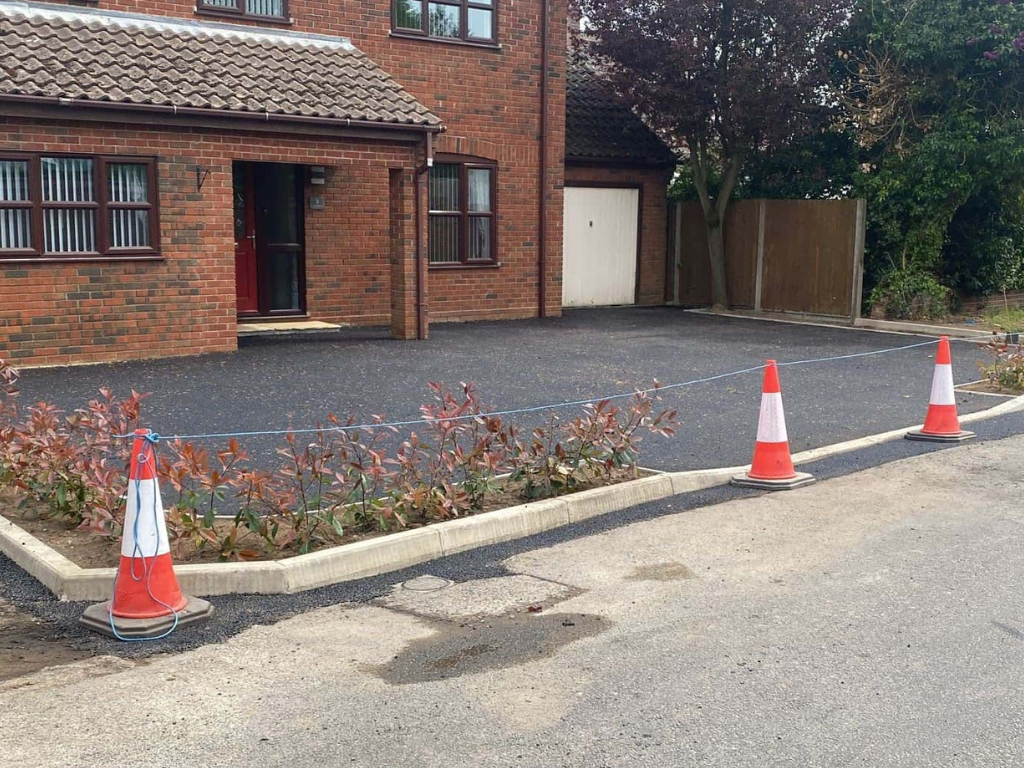The Future of New Build Tarmac Technology
Introduction: Tarmac, also known as asphalt, has been a staple in construction and infrastructure for decades. It’s the material we drive on, walk on, and even play on. But like many other industries, tarmac technology is not standing still. Innovations and advancements are shaping the future of tarmac, making it an even more versatile and sustainable choice for new build projects. Worlingworth Driveway Solutions explores the exciting developments that promise to transform the tarmac industry in this blog post.
Recycled and Sustainable Materials
- Sustainability is a global priority, and the tarmac industry is no exception. The future of tarmac technology includes a shift towards using more recycled materials. Recycled asphalt pavement (RAP) is becoming a popular choice. It allows old asphalt to be reused, reducing the demand for new resources and minimising waste.
- Additionally, innovative materials like warm-mix asphalt (WMA) are gaining traction. WMA requires lower production temperatures, reduced energy consumption and fewer emissions during manufacturing. This environmentally friendly approach aligns with global sustainability goals.
Improved Durability and Longevity
- Future tarmac technology aims to extend the lifespan of paved surfaces. Researchers are developing advanced formulas and additives that enhance the durability of tarmac. This means fewer repairs and replacements, leading to cost savings and reduced environmental impact.
- Nanotechnology is also making its mark in tarmac. Nano-engineered materials can improve the strength and resilience of asphalt, making it more resistant to wear and tear from heavy traffic and weather conditions.
Self-Healing Tarmac
- Imagine a tarmac that can repair itself. This concept is not as far-fetched as it may seem. Researchers are exploring the use of capsules containing healing agents within tarmac. When cracks form, these capsules rupture and release the healing agents, automatically filling and sealing the damage. Self-healing tarmac has the potential to reduce maintenance costs and enhance road safety significantly.
Smart and Sustainable Roads
- The future of tarmac extends beyond the material itself. Smart road technologies are being integrated into tarmac surfaces. These technologies can include embedded sensors to monitor road conditions and traffic flow and even detect ice or potholes. Data collected from these sensors can help optimise traffic management, enhance safety, and reduce maintenance efforts.
- Solar roadways, which use tarmac embedded with solar panels, are another exciting development. These roads can generate renewable energy, contribute to grid power, and even melt snow and ice during winter.
Noise-Reducing Tarmac
- Noise pollution is a growing concern in urban areas. New build tarmac technology is addressing this issue by incorporating noise-reducing properties. Quieter road surfaces can improve the quality of life for residents living near busy streets and highways.
Conclusion: The future of new-built tarmac technology is bright, with sustainability, durability, and innovation at the forefront. As advancements continue, we can expect to see more eco-friendly and resilient tarmac surfaces that require less maintenance and provide improved performance. These developments benefit construction projects and contribute to a more sustainable and comfortable living environment for communities worldwide.
Call us on: 01728 448 691
Click here to find out more about Worlingworth Driveway Solutions
Click here to complete our contact form and see how we can help with your driveway needs.

